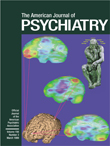Bridging Worlds: Understanding and Facilitating Adolescent Recovery From the Trauma of Abuse
In this world, we are all victims, some more, some less. Normal adolescents remind parents of this on a daily basis. Yet, teenagers who have been traumatized create more than minor tempests throughout society. The extent of the psychological impact of trauma on the primary victims depends on many factors: the age when the trauma occurs, how long the abuse lasts, who does it, the form of the abuse, the response of significant others, and the victim’s singular constitution. Recent studies have revealed a great deal about this subject. Unfortunately, either too many clinicians have not learned of these advances or they have not assimilated the information sufficiently to apply the knowledge to therapeutic advantage. Victims of childhood abuse are difficult patients, regardless of what age they are when they come for therapy. Short-term therapy has proven to be Band-Aid medicine for the myriad intrapsychic changes necessary for healthy growth.
Potent advocates for victimized teens, the authors of Bridging Worlds attempt to further the understanding of youngsters traumatized earlier in their lives, while also proposing a coordinated program for their treatment and rehabilitation. This gallant effort to unravel the Gordian knot of how best to help these troubled and troublesome adolescents does not begin auspiciously but does end in sockdolager fashion.
Chapter 1 discourses on the various types of families that adolescents can encounter (e.g., gang, foster, adoptive, and birth families). Chapter 2 addresses the matter of diversity in our society—socioeconomic variables, ethnic and race differences, and extant biases against gay and lesbian youngsters. Chapters 3, 4, and 5 focus on child protection options, the juvenile justice system, and the need for educational creativity, and chapter 6 provides a pertinent capsule review of the history of the mental health movement. Frankly, I was ready to defenestrate the book at this point, the material proving hardly more enlightening than the magazines, newspaper editorials, and television reports these pages overabundantly refer to. Clinical examples seem prosaic. Accompanying photos and drawings appear gratuitous. Every now and then, however, refreshing ideas occur. For instance, the authors refer to these youths as heroes for their ability to develop creative survival techniques. They speculate that teenage violence reflects a logical response to the adult hypocrisy these youngsters have experienced. They recommend that foster and adoptive parents be told that the facade of toughness these youngsters present is merely a behavioral masking of trauma and that these youths need unconditional love, compassion, and understanding, as well as role models. They point out that collaboration between agencies is essential for positive results. Similarly, they state that an overemphasis on a DSM diagnosis can be a detriment to the understanding of a child’s behavior.
The policy of incarcerating delinquent youths has failed. The authors’ overidealistic alternative is a boarding school staffed by saints, especially for nonviolent adolescent violators. Since these youngsters lack the strength of discipline that comes with normal development, the authors suggest special educational approaches.
This book rockets to another level beginning with chapter 7. Since abused youngsters often present in an insipid way, the authors remind potential healers that they must be able to survive the deluge of negativity typical of the first phase of treatment: “Adult passage of such tests is an initial building block to create a bridge between the world of the helper and the island of the harmed” (p. 125). Boundaries generally maintained with adult patients feel artificial to these teens and are therefore contraindicated. Instead, offering unasked-for advice, praising the youngster, playing games, taking them places, teaching them about values and ethics, arguing with them, and self-disclosure are vital ingredients for the establishment of a real relationship necessary for treatment success. “Therapists must understand that adults often represent to youths a self-centered and desensitized generation that has recklessly squandered and even damaged both its human and non-human resources” (p. 135). The issue of early trauma per se must be addressed gingerly, and the teenager should be the one in control of titrating such forays.
Chapters 8 and 9 elaborate on what the authors call child-abuse-specific treatment of trauma (“CASST”), an apt reference to how fractured these youths are. Emphasis is placed on accurate assessment of each youth. Therapeutic interventions need to be provided by a specially trained, well-coordinated interdisciplinary team. Various stages and hurdles of treatment are outlined and detailed. Although enormous societal barriers (e.g., funding, finding staff sufficiently skilled, etc.) must be overcome in order to implement this treatment, I question its applicability to juveniles who are already inveterately entrenched in violent behavior.
Unfortunately, the authors allude only to recent animal and human studies indicating that disruptions in attachments can cause longstanding, even permanent, alterations in CNS neurotransmitter, opioid, and endocrine function. The role of these factors, as well as the psychodynamics of abuse victims, is better referenced in Treating the Adult Survivor of Childhood Sexual Abuse(1). The mystery of how some children survive horrendous upbringings without recourse to teen and adult maladaptations remains a challenge.
I recommend this book only from page 125 on.
1. Davies JM, Frawley MG: Treating the Adult Survivor of Childhood Sexual Abuse. New York, Basic Books,1994Google Scholar



